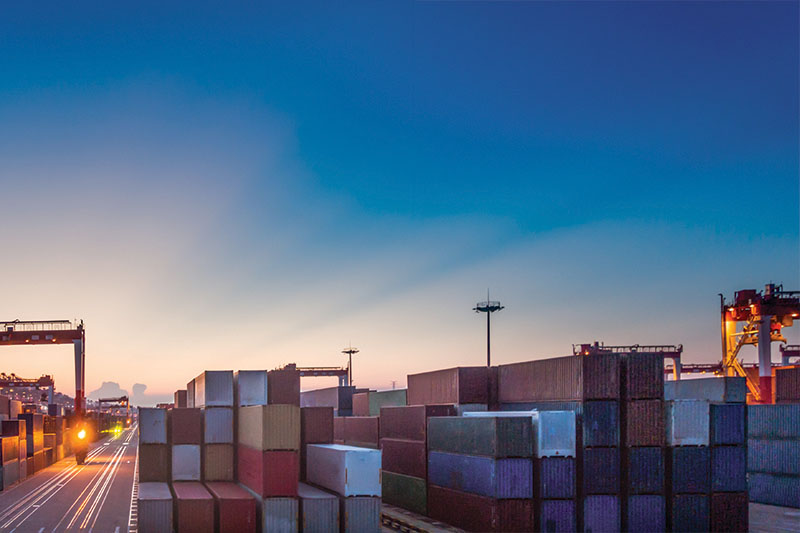IANA data points to August intermodal volumes seeing slight decline, amid signs of improvement
As was the case in July, August intermodal volumes mostly saw sequential gains, while year-to-date volumes, through August, amid the ongoing COVID-19 pandemic, were largely down, according to data provided to LM by the Intermodal Association of North America (IANA).
Total August shipments—at 1,575,928—were off 2.7% annually. Domestic containers—at 695,999—were up 4.4%, while trailers—at 108,901—were up 3.2%. All domestic equipment—at 804,900—was up 4.3%. ISO, or international, containers—at 771,028—saw a 2.7% decline.
On a year-to-date basis through August, IANA reported the following:
- domestic containers fell 0.1% to 4,993,588;
- trailers were down 12.7% to 733,736;
- all domestic equipment was off 1.7% to 5,727,324;
- ISO containers declined 12.7% to 5,569,982; and
- total units were down 7.5%, to 11,297,306
With the third quarter more than two-thirds complete, August’s numbers are in line with its second quarter data, which found that that second quarter intermodal volumes—at 4,016,899 units—fell 11.9% annually. Domestic containers—at 1,742,968—slipped 7.0%, with trailers—at 259,752—falling 14.0%All domestic equipment—at 2,002,720—was off 8.0%. ISO, or international, containers, were down 15.4%, to 2,014,179.
With ISO containers seeing the steepest monthly August and year-to-date decline, IANA has attributed that to falling U.S. imports due to COVID-19 shutdowns and high tariffs expected to continue to drag down international volume throughout the rest of 2020. But that comes with a caveat in that August import tallies, from both the Port of Los Angeles and the Port of Long Beach showed strong growth.
“The COVID-19 pandemic makes forecasting the intermodal market difficult to predict,” the report stated. “Total quarterly intermodal losses are not expected to exceed Q2’s steep decline of 11.9%. It is likely that international intermodal will fall between 10% and 15% during the rest of 2020. Falling U.S. imports due to COVID-19 shutdowns and high tariffs will continue to drag down international volume throughout the rest of 2020. Domestic containers are also expected to fall between 10% and 15%. Domestic containers decline over 2020 can be linked to an upsurge in trucking competition and a drop in transloading due to falling imports. Trailers were struggling before the onset of COVID-19 in North America, but are now expected to fall even further due to an increase in conversions to containers. Overall, total intermodal loadings are forecast to fall about 10% for all of 2020.”
When asked what a sustained modest increase demand would mean for intermodal, from a volume perspective, and if it could result in increased share from the trucking side, IANA President and CEO Joni Casey pointed out in a previous interview that consistent increased demand in both international and domestic freight moves will afford the potential for higher intermodal volumes.
“And if highway capacity starts to tighten, this could also push freight to intermodal,” she said. “However, lower fuel prices, which currently exist, create some advantages for OTR moves.”
Larry Gross, president of Gross Transportation Consulting, recently noted that intermodal has thus far made a rapid recovery from the pandemic-related downturn.
“Volume bottomed out in mid-April, with the U.S. weekly intermodal volumes as reported by the Association of American Railroads (AAR) down 20% annually,” he said. “Since then, activity has steadily increased. The most recent late August readings came in 33% higher than the trough and 5% ahead of prior year—a remarkable performance! This recovery has been powered entirely by the domestic intermodal sector, that is, the movement of domestic containers and trailers, as opposed to the international sector, which comprises the movement of ISO (international) containers. In July, IANA data showed domestic movements up 11% over prior year, while intermodal moves were still down by almost 13%. This degree of divergence is very unusual. I expect that over time the performance of these two sectors will converge. Normally, each sector accounts for about half of all intermodal activity.
Gross added that he has been pleasantly surprised by the speed and intensity of the domestic rebound.
“I do, however, harbor continuing concerns over the possible fragility of the recovery given the continued course of COVID-19 and the expiration of government economic support with seemingly little prospect of a new deal in the immediate future,” he said.













